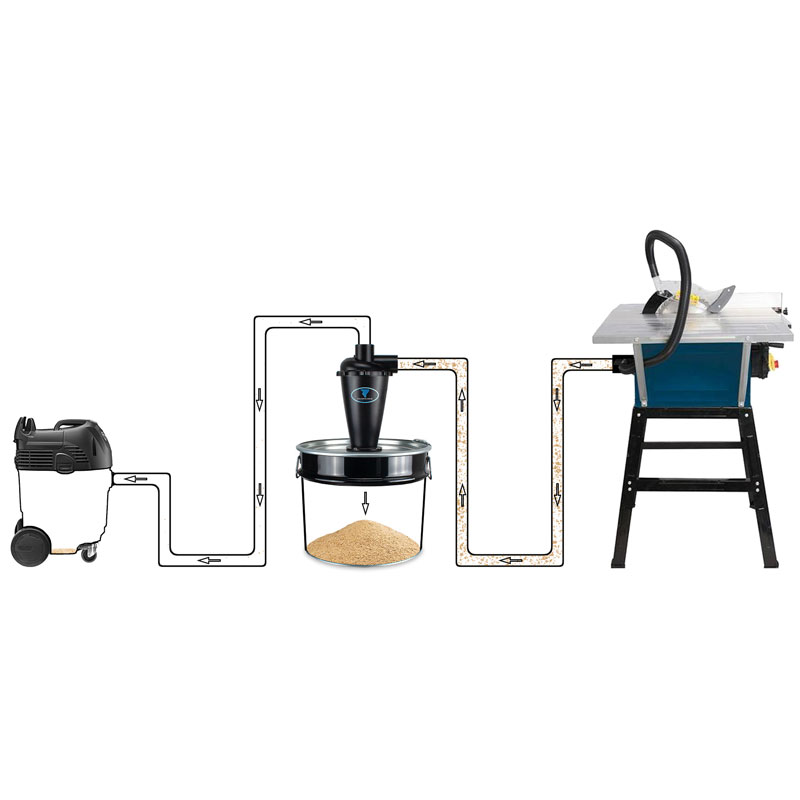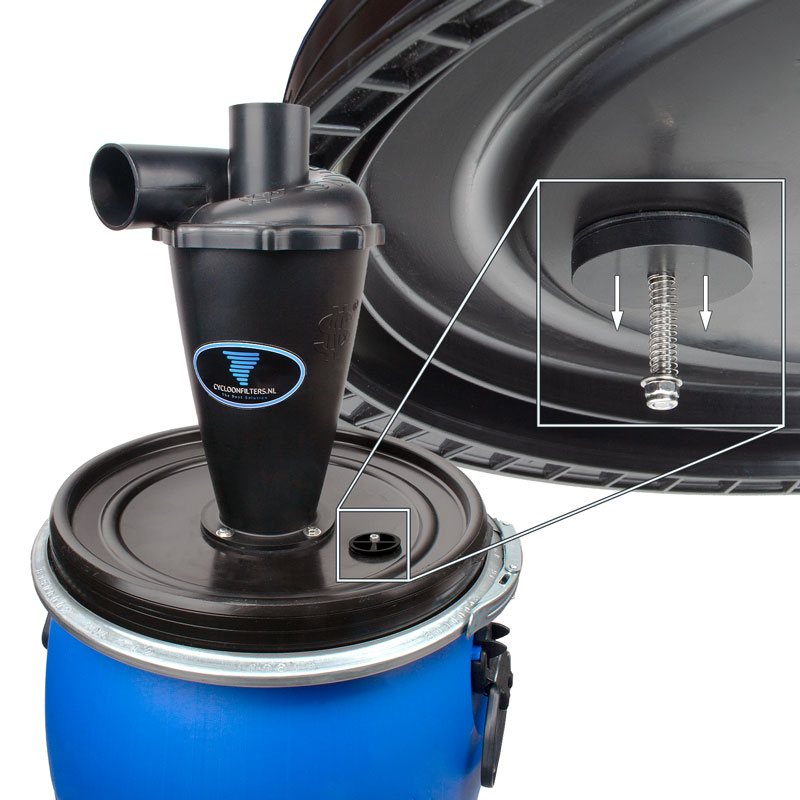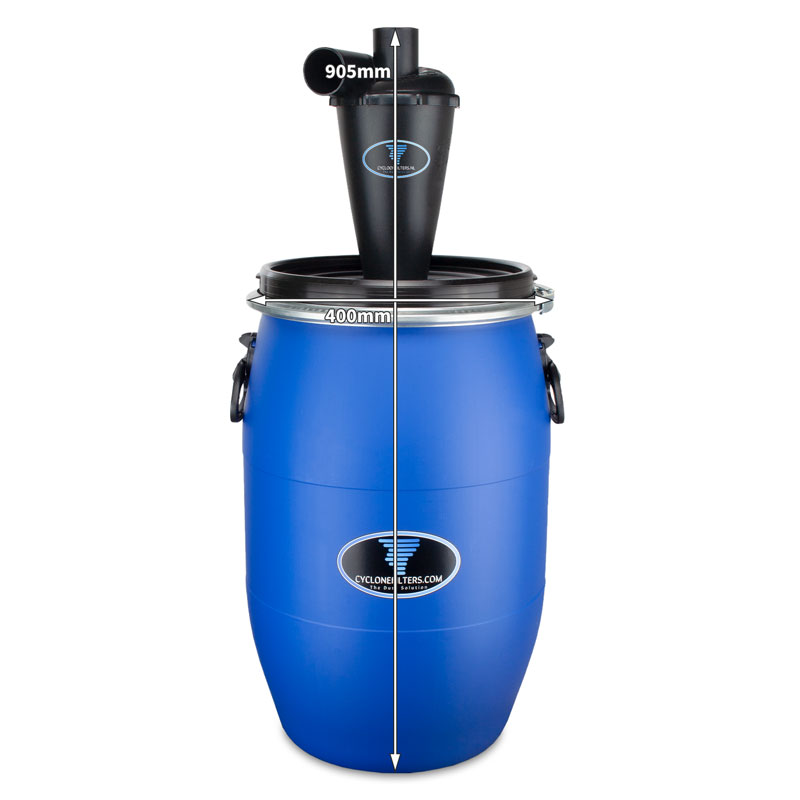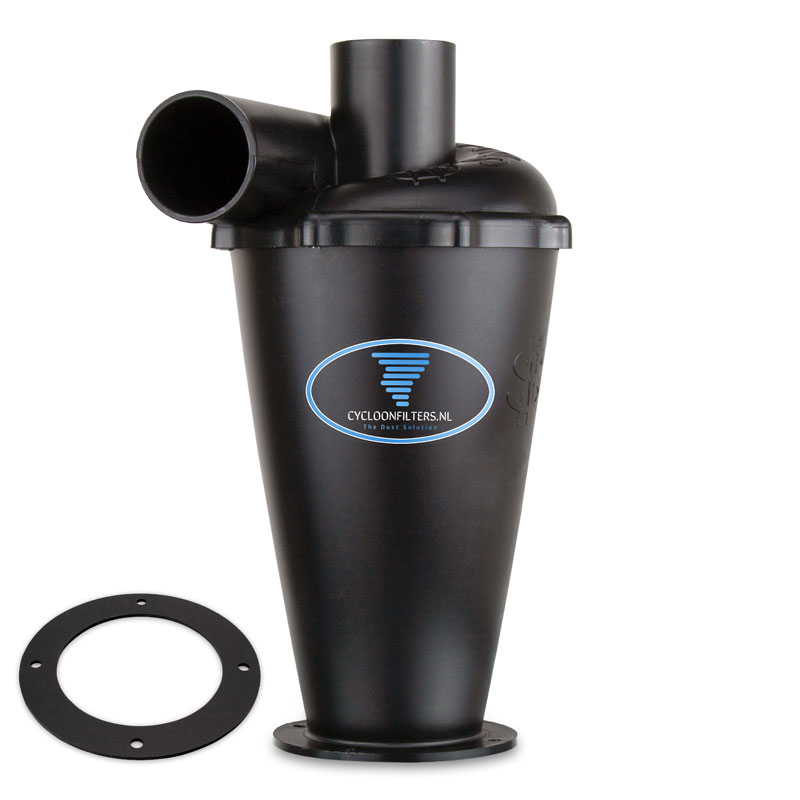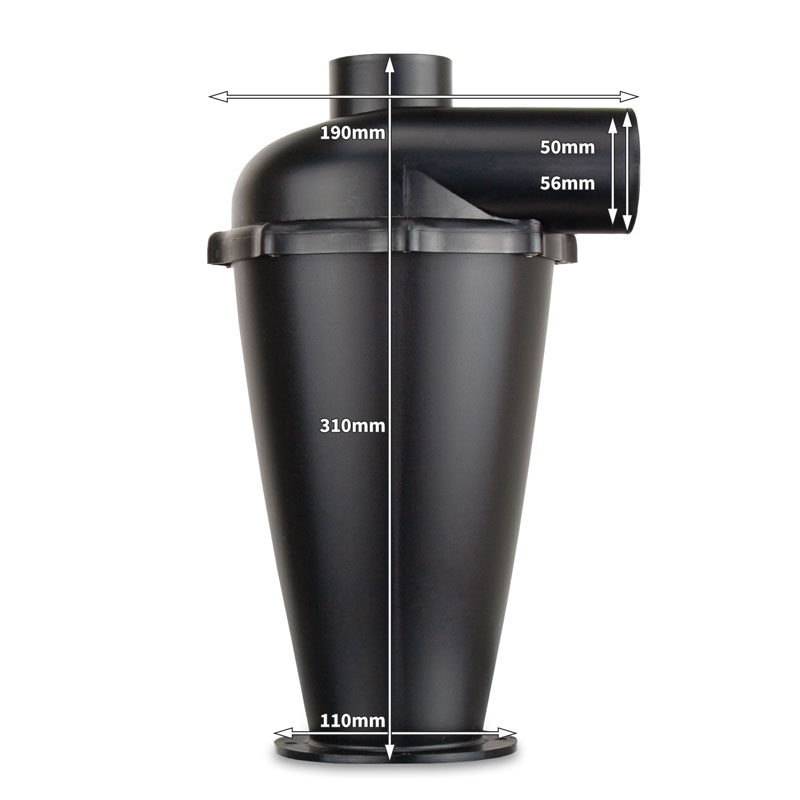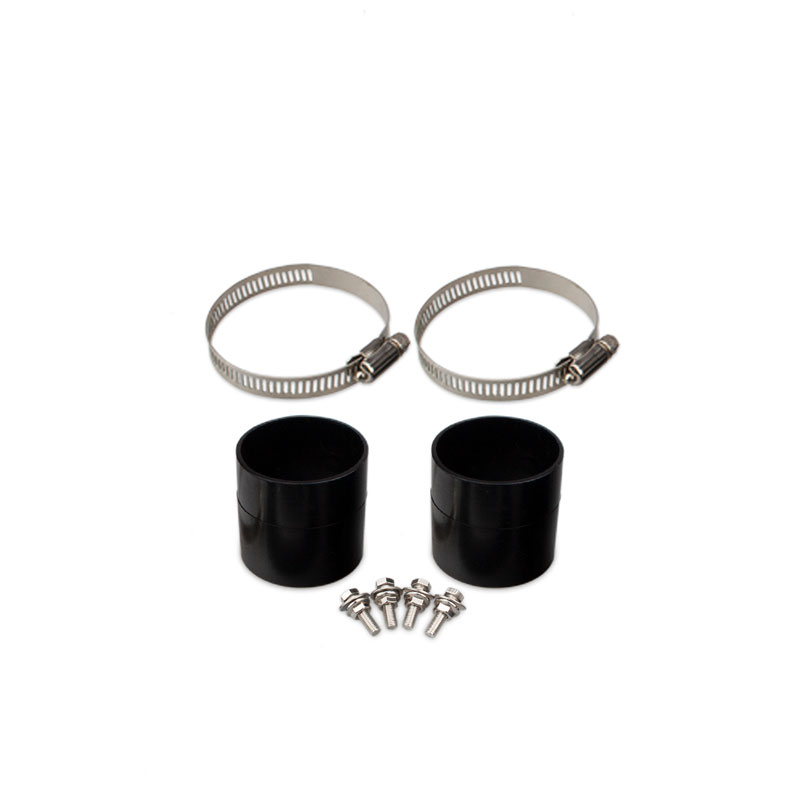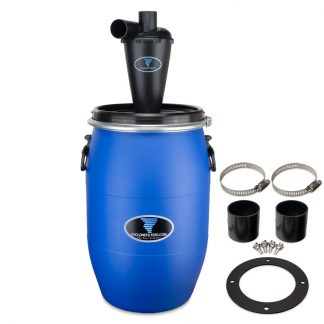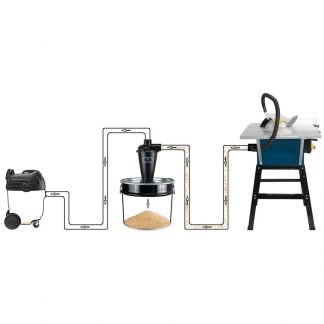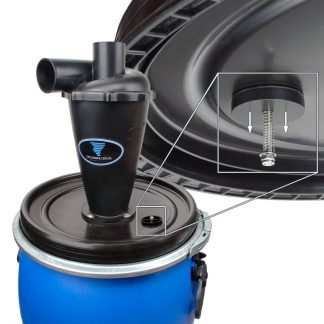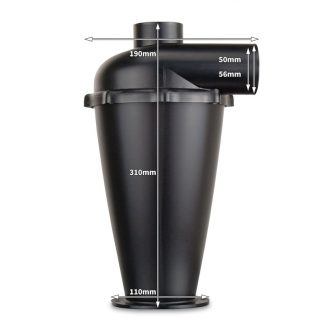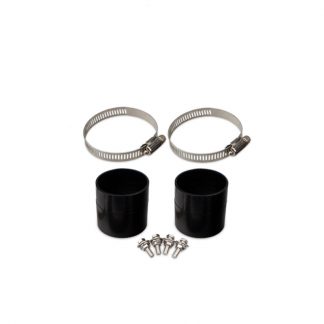General
This filter system is a dust separator and ideal for sucking up dust, wood chips, grit etc. in the (home) workshop or, for example, at home during a renovation. The system works as a pre-separator, filtering up to 99% of the dust which therefore does not end up in the vacuum cleaner.
This system is made from very stong ABS and HDPE and is therefor ideal in situations where the system must be able to take a beating. For example on construction sites. Also, the system can be used under humid conditions without worrying about rust. Ideal for working outside or in workshops with high humidity and no heating.
Result:
- Replace far fewer vacuum cleaner bags because almost all the dust ends up in the dustbin;
- Continuous maximum suction power because the vacuum cleaner bag hardly fills up;
- Work longer with the use of a larger dustbin in comparison with a vacuum cleaner bag;
- Longer lifespan of the vacuum cleaner due to less wear and tear on the engine.
Almost all vacuum cleaners can be connected to the filter system: standard household vacuum cleaners, (professional) shop vacuums, and extraction systems.
Autumn sale

Free shipping from €140. Valid within the Netherlands, Belgium, and Germany.
Filter combination 3-60P consists of cyclone filter model 3 and a 60 liter dustbin (HDPE). Cyclone filter model 3 filters up to 99% of the dust whereas cyclone filter model 2 filters up to 95%.
The rubber gasket between the base of the cyclone filter and the lid of the dustbin ensures an airtight connection. Filter systems without a rubber gasket run the risk of leaking air through cracks between the base of the filter and the lid.
The dustbin has a clamping lid and is airtight due to a rubber seal in the lid. The two handles make moving the filter system easy, even when the dustbin is full.
This set is made of high-strength ABS and HDPE, making it safe to store the system in damp, unheated workshops and sheds without the risk of rusting.
Anti-crush pressure valve:
The filter system has an anti-crush pressure valve that is designed by us to ensure that the vacuum pressure in the dustbin does not become too high. This prevents the dustbin from collapsing due to excessive vacuum pressure. Not only professional shop vacuums, but also normal household vacuum cleaners can often generate too much vacuum pressure. Without an anti-crush pressure valve, most plastic dustbins (and even weak metal ones) will collapse when the vacuum inside the dustbin gets too high, for example when dust is being sucked up through small dust ports.
Operation:
For a cyclone filter system to work properly, the anti-crush pressure valve must remain closed during normal use, otherwise dust will still end up in the vacuum cleaner. A valve that opens continuously is a sign that A. the spring resistance isn’t set correctly or B. the negative pressure is too high (for example, because dust is being sucked through a dust port that is too small). In those cases, a number of things can be done:
- Tighten the adjustment nut to increase the spring resistance. Turn the adjustment nut with a maximum of two rotations each time and then test the system. This prevents the pressure valve from being adjusted too tightly causing the valve not to open in a timely manner and thereby crushing the dustbin. For our blue dustbins the adjustment nut should be set slightly below the center of the threaded portion of the bolt.
- Lower the suctions power of the vacuum cleaner. Not too low, because there must be a basic vacuum pressure in the dustbin for proper operation.
- Use a nozzle with variable air inlet, for example our Pro-X nozzle. The nozzle can admit air from the outside by means of a slide, which reduces the vacuum pressure.
- Use a shorter hose on the side inlet of the filter. A hose creates air resistance: the longer the hose, the greater the air resistance. Greater air resistance creates greater a vacuum pressure.
- Use a hose with a larger inner diameter and a larger nozzle. As a result, more air can flow through the system which reduces the vacuum pressure.
- Reduce the number of bends in the hose that is attached to the side inlet of the filter. Every bend creates air resistance and thereby a greater vacuum pressure.
Please note: do you want to use the system on machines whose dust port has an inner diameter smaller than 30mm and do you not have a vacuum cleaner with adjustable suction power? Then we recommend using a nozzle with variable air inlet, for example our Pro-X nozzle. Smaller dust ports will cause excessive vacuum pressure, causing the valve to open continuously.
To be used with dust extraction:
- Sander;
- Table saw;
- Sand blasting machine;
- Router;
- Mitre saw;
- Wall and floor grinder;
- CNC router;
- Vacuuming shop floors;
- And many other applications.
Specifications:
- Filters up to 99%;
- Minimum air flow: 1670 liter per minute (100m3/h);
- Maximum air flow: 4667 liter per minute (280m3/h);
- Inlet and outlet inner diameter: 50mm;
- Inlet and outlet outer diameter: 56mm;
- Height: 905mm;
- Width: 400mm;
- Material filter: ABS;
- Material dustbin: HDPE.
Content:
- Cyclone filter model 3;
- 60 liter HDPE dustbin;
- Rubber gasket;
- Anti-crush pressure valve;
- 2 x 50mm connector: outer diameter 50mm | inner diameter 46mm;
- 2 x hose clamp: range 40mm to 64mm;
- Fasteners.
Optional:
- Rubber reducer: the top inlet of the filter has an inner diameter of 50mm. Sometimes that is too big, because some (construction) vacuum cleaners have a hose nozzle smaller than 50mm (outer diameter). A rubber reducer can then be used to reduce the top inlet. Which rubber reducer you need depends on the outer diameter of the part of the nozzle that goes into the top inlet of the filter.
Important:
- Do you want to use the system on machines whose dust port has an inner diameter smaller than 30mm and do you not have a vacuum cleaner with adjustable suction power? Then we recommend using a nozzle with variable air inlet, for example our Pro-X nozzle. Smaller dust ports will cause excessive vacuum pressure, causing the valve to open continuously.
Do you have questions? Most answers can be found on our FAQ page. Can’t find the answer? Please do not hessitate to contact us via our contact page.


